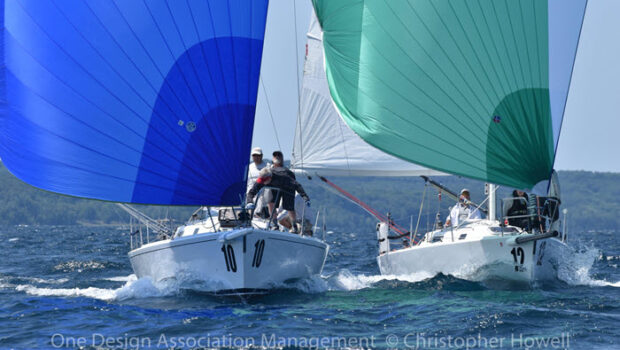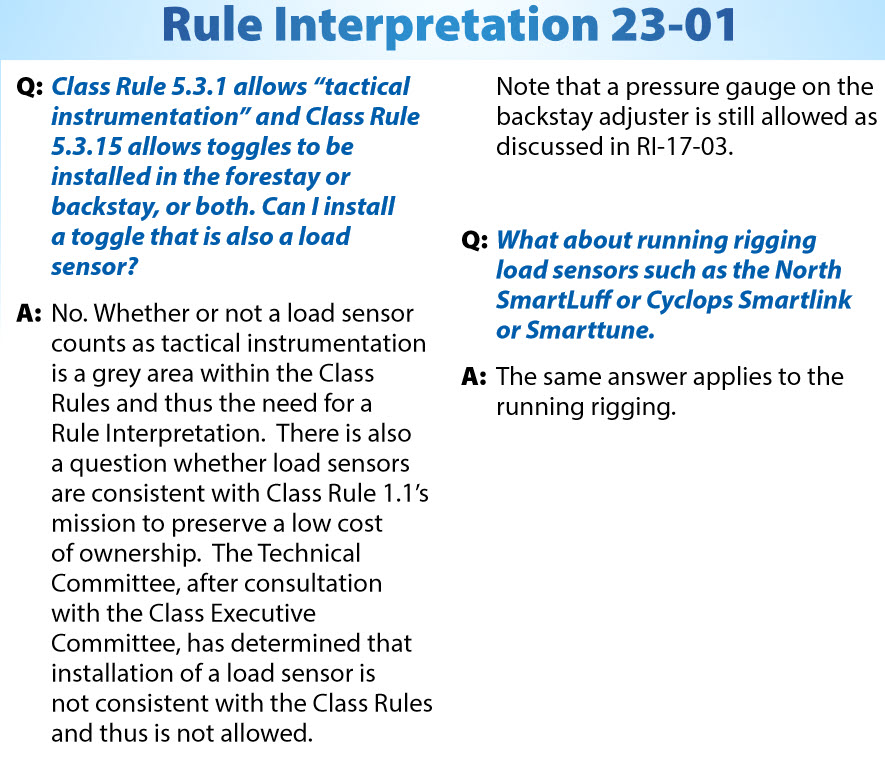Managing cost and complexity
Published on June 6th, 2023
The J/105 was the first ‘sprit boat’ when it was designed by Rod Johnstone in 1990, with the Class Association hosting one-design fleets across the USA and Canada. The continued health of the class is founded in its focus to limit costs to competitively race, with the class website listing these examples:
• Sail purchases limited to five in a two year period
• Class rules prohibit most costly changes to the boat and equipment
• Owner/driver class with limited exceptions for family and long-term friends
• No paid professionals with associated egos bossing crew and promoting arms races
• Boat can be sailed with as few as four and Class has a low weight limit so most people race with five or six
• Simple interior with little to maintain
In this report from the J/105 Class Spring Newsletter, they offer a recent example of how the Class handled emerging technology in the sport:
One of the key tenets to the Class is keeping costs under control and is embodied in Class Rule 1.1 which calls for preservation of a low cost of ownership. To that end, the Technical Committee, and the Class as a whole, tends to not be early adopters of new technology. The Class waited several years for the costs of laminate jibs to decrease before allowing them and then did the same thing when it came to allowing carbon in the jibs.
The latest example of this is load sensors. Lately there has been a push at the cutting edge to install load sensors on both the standing and running rigging. While there undoubtedly can be an advantage to knowing the loads on the standing and running rigging, does it really benefit the Class? Does it preserve ease of handling? Low cost of ownership? Equality of performance? What it does do is increase cost and complexity.
These questions were all being considered by the Technical Committee earlier this year with regard to standing rigging load sensors. Rather than make a decision by ourselves, the Technical Committee consulted with the Executive Committee for their opinion as reflected in the minutes from the April business meeting. With the Executive Committee’s endorsement, the Technical Committee prepared a Rule Interpretation (RI) disallowing the use of load sensors other than a pressure gauge on the backstay.
Even before that RI was issued, the same question was asked about the running rigging for which the Technical Committee reached the same conclusion. Below is the text of the latest RI on this subject. It should be noted that as time goes by, the cost of these devices may go down and the ability to integrate them with typical instrumentation suites may become easier at which time this RI may be revisited just as the Class did with laminate jibs and then allowing carbon. However, this is the status for now and likely the next several years.










 We’ll keep your information safe.
We’ll keep your information safe.